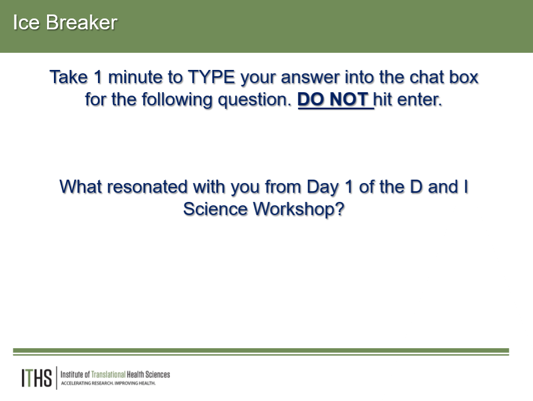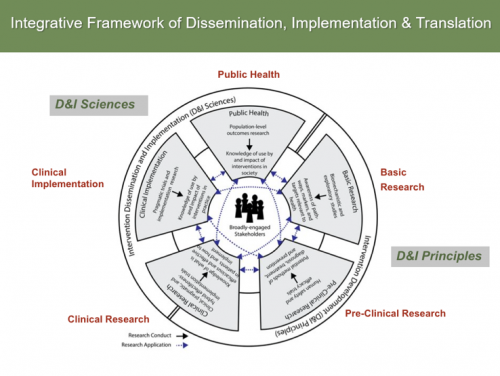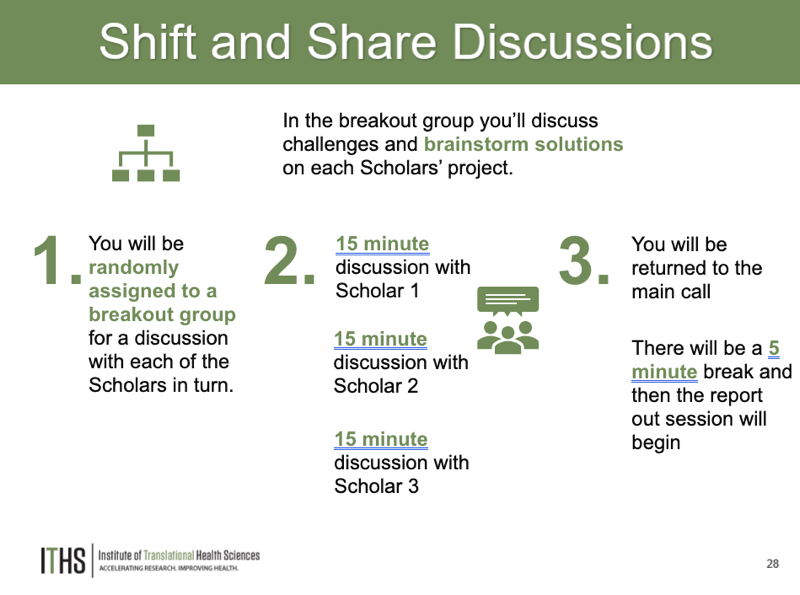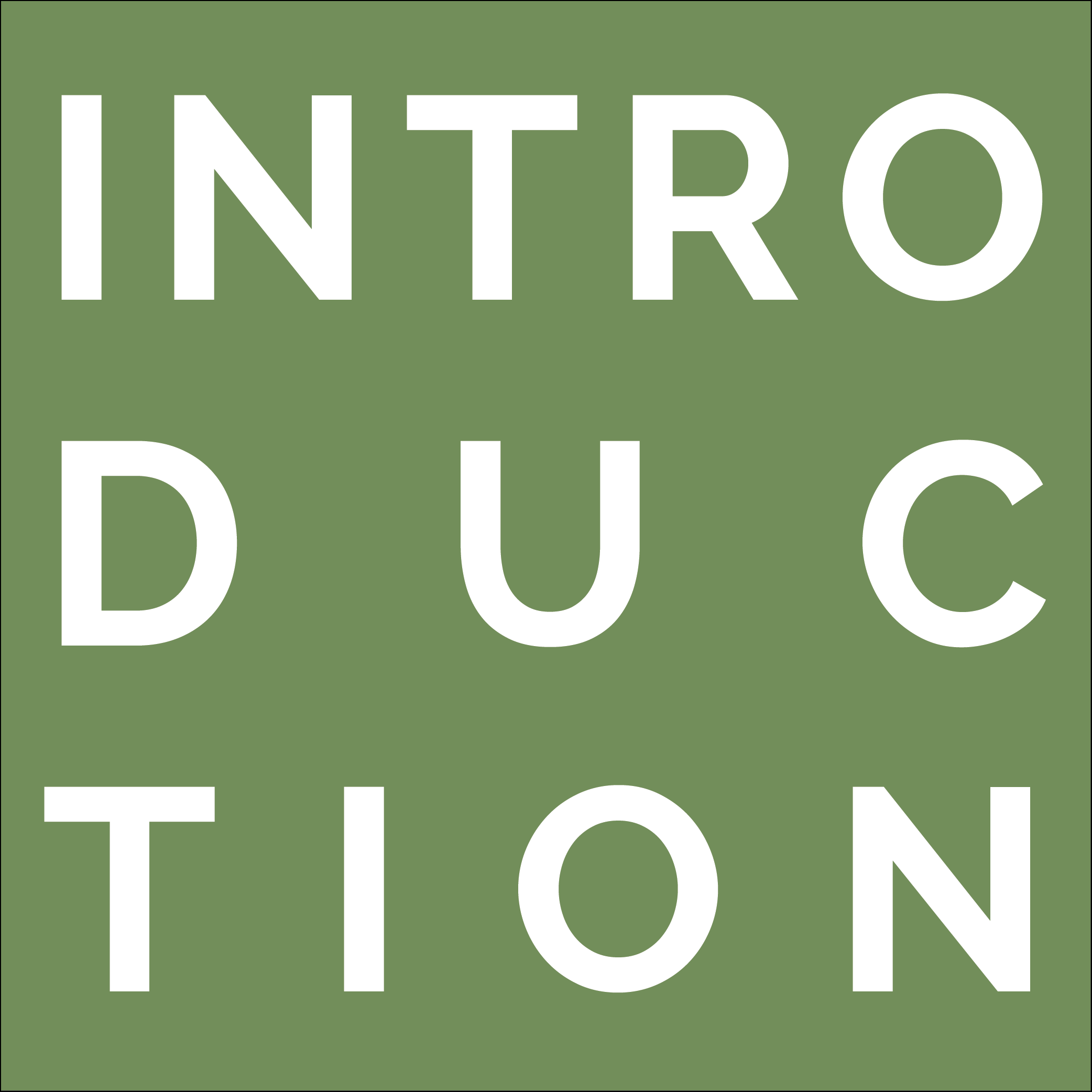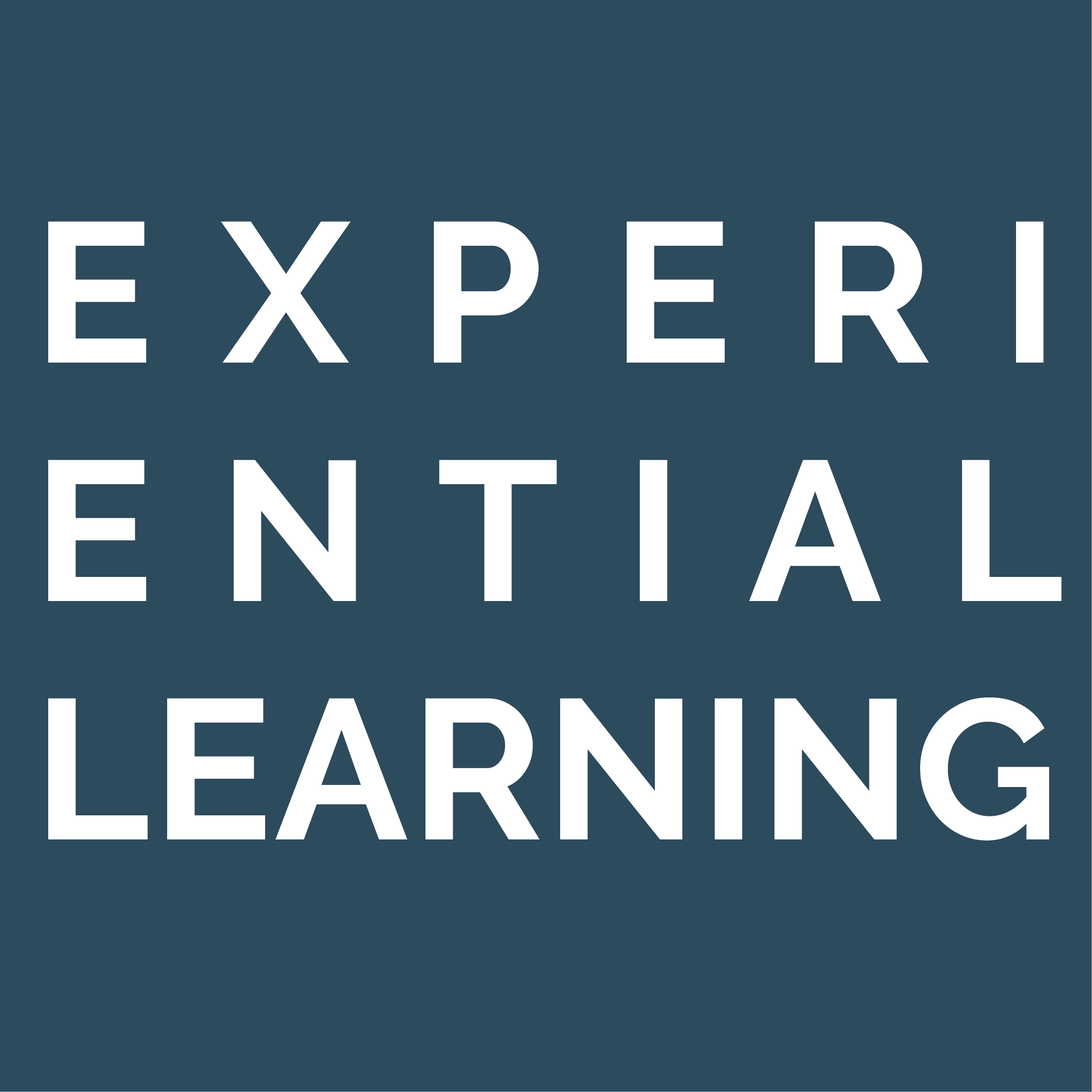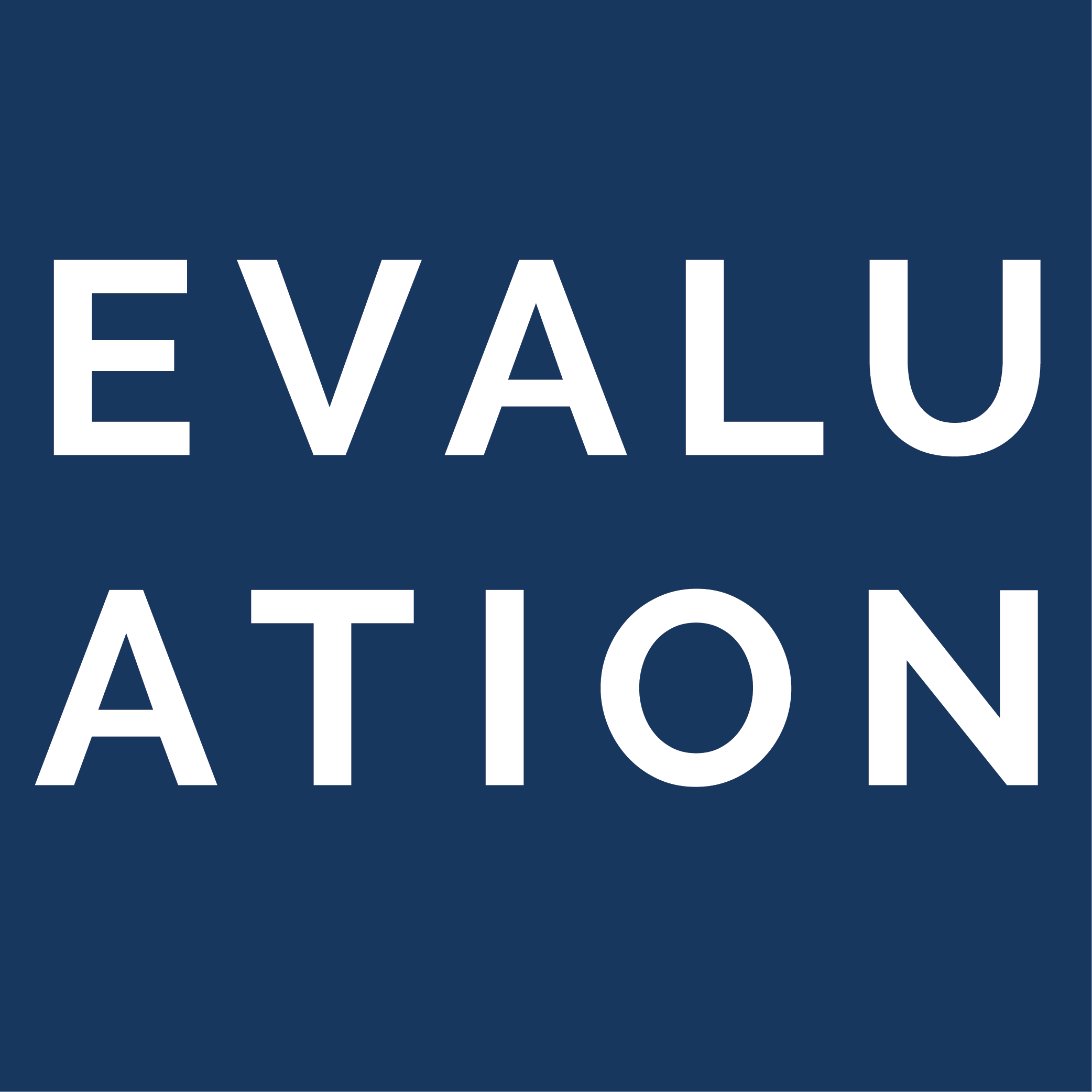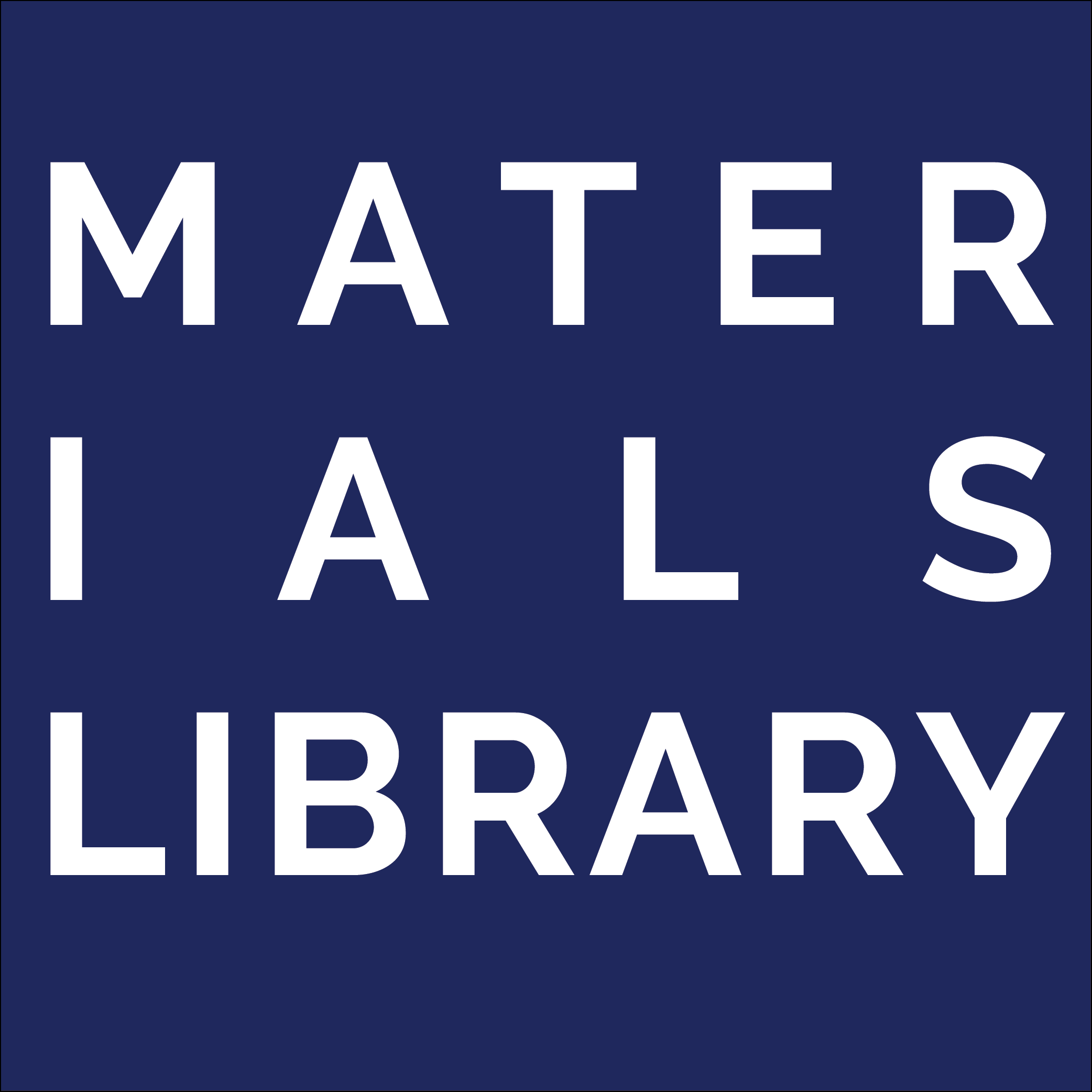
Day Two
Learning Objectives
The following set of learning objectives were developed to structure the second day of the workshop.
Explain how D&I research fits into the continuum of translational research
Apply the Integrative Framework of Dissemination, Implementation, and Translational (IFDIT) framework to real-world translational research studies
Discuss the IFDIT framework relevance to trainees’ translational research studies
Workshop Topics
The second day of the workshop consisted of the following schedule. Details of each section of Day 2 are discussed below.
Note: You can download the slides and other materials for Day Two at the bottom of the page. All of the program downloads can be found in the Materials Library.
Agenda Day Two
Time
Topic
8:00am
Icebreaker
8:05am
D&I Science across the Translational Science Spectrum
8:15am
Apply D&I Science prinicples to 3 TL1 Trainee projects: Shift and Share Activity
9:20am
Facilitator and Trainee Reflection
9:25am
Report Out
9:45am
Introduction of Experiential Learning Opportunities
9:59am
Evaluation
Icebreaker
Icebreaker
Similar to Day 1, we followed the Liberating Structures Mad Tea activity to engage trainees early in the workshop and to create a space for sharing. This activity lasted 5 minutes. In order to use this activity as an icebreaker, follow these steps:
- Identify open-ended prompts in advance. We placed the open-ended question on separate slides with the instructions (see image to the right). For this week, we used one question to help reflect on Day 1’s workshop: What resonated with you from Day 1 of the D&I Science Workshop?
- After welcoming participants, ask them to take 1 minute to type their answer to the following question without hitting enter. After 1 minute, everyone hits “enter” at the same time and all attendees’ answers are populated in the chat box, giving an opportunity for the facilitators to comment and the trainees to chat with each other.
D&I Science Across the Translational Science Spectrum
D&I Science Across the Translational Science Spectrum
In this section, we recap Day 1 of the workshop and revisit the D&I core principles. In addition, we describe the Integrative Framework of Dissemination, Implementation, and Translational across the translational science spectrum, providing multiple examples of application of the D&I principles.
(Leppin AL, Mahoney JE, Stevens KR, Bartels SJ, Baldwin LM, Dolor RJ, Proctor EK, Scholl L, Moore JB, Baumann AA, Rohweder CL, Luby J, Meissner P. Situating dissemination and implementation sciences within and across the translational research spectrum. J Clin Transl Sci. 2019 Jul 29;4(3):152-158. doi: 10.1017/cts.2019.392. PMC7348034).
Apply D&I Science principles to 3 TL1 Trainee projects: Shift and Share Activity
Apply D&I Science principles to 3 TL1 Trainee projects: Shift and Share Activity
This 65-minuite section of the workshop integrated trainees’ work. We pre-identified three trainees who would be willing to share their research and potential challenges to translation or clinical implementation. One trainee was identified from each of the three tracks within which the ITHS trainees fit: Develop, Demonstrate, and Disseminate. They were each given a template to help guide their five-minute presentation that included their study background, goal, translational research stage, methods, and potential challenges to translation or clinical implementation.
Before the start of the workshop, the session facilitator met with each of the presenters to review their slides and help brainstorm potential challenges to translation that the presenters would pose to the shift-and-share group. In each group, the presenter shared the overview of their project and potential challenges to translation. The groups brainstormed additional potential challenges to translation as well as potential solutions that demonstrated the application of D&I science principles. After the presentations, trainees were moved to three small breakout rooms split. Each room included one of the three presenting trainees and an assigned facilitator for a shift and share activity. At each 15-minute mark, non-presenting trainees were shifted into the next breakout room to ensure that all participants were able to have discussion with all three presenting.
Facilitator and Trainee Reflection
Facilitator and Trainee Reflection
The non-presenter trainees took a 5-minute break while the facilitator and presenting trainee discussed the most critical challenges and potential solutions identified in the shift and share discussions.
Report Out
Report Out
During this 20-minute session, the three presenting trainees reported out on the following questions.
- Did the groups identify any new challenges?
- Which challenges do you think are most critical to focus on?
- What solutions did you discuss? What made these a good fit?
- How did you or could you integrate D&I science principles into the solutions?
Introduction of Experiential Learning Opportunities
Introduction of Experiential Learning Opportunities
Before the closing of the workshop, we introduced the second part of the D&I Science program – Experiential Learning. We presented the three opportunities in detail and let the trainees know that they would be asked to complete a survey after the workshop ranking their interest in the three opportunities. We provided materials related to each learning opportunity that Scholars could review to help them rank. We shared the timeline of the experiential opportunity and provided guidance on how to choose an opportunity (see below).
How to decide which learning opportunity to choose
CHOOSE:
IF:
Stakeholder Assessment
…you want to learn who might be your allies and obstacles in implementing or disseminating your innovation.
A good choice for scholars working at any translational stage
Planning Implementation
…you expect to have an intervention ready for implementation.
A good choice for scholars working at the clinical or public health stages of translational science
Dissemination Plan Development
…you think you will have a research product that you want to move to the next phase of translation either in research, the clinic, or the community.
A good choice for scholars working at any translational stage




